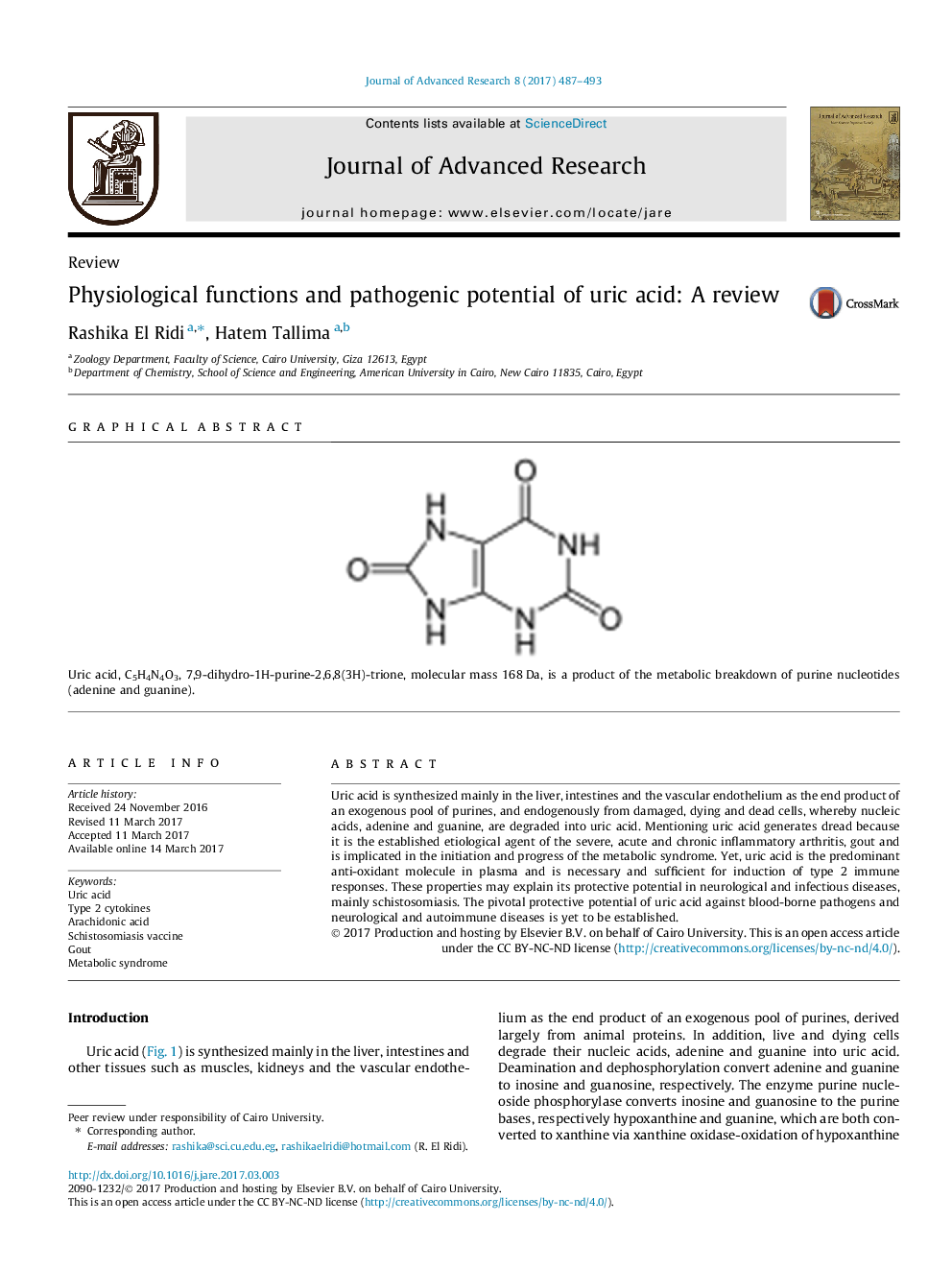| کد مقاله | کد نشریه | سال انتشار | مقاله انگلیسی | نسخه تمام متن |
|---|---|---|---|---|
| 5022840 | 1369769 | 2017 | 7 صفحه PDF | دانلود رایگان |
Uric acid is synthesized mainly in the liver, intestines and the vascular endothelium as the end product of an exogenous pool of purines, and endogenously from damaged, dying and dead cells, whereby nucleic acids, adenine and guanine, are degraded into uric acid. Mentioning uric acid generates dread because it is the established etiological agent of the severe, acute and chronic inflammatory arthritis, gout and is implicated in the initiation and progress of the metabolic syndrome. Yet, uric acid is the predominant anti-oxidant molecule in plasma and is necessary and sufficient for induction of type 2 immune responses. These properties may explain its protective potential in neurological and infectious diseases, mainly schistosomiasis. The pivotal protective potential of uric acid against blood-borne pathogens and neurological and autoimmune diseases is yet to be established.
Uric acid, C5H4N4O3, 7,9-dihydro-1H-purine-2,6,8(3H)-trione, molecular mass 168Â Da, is a product of the metabolic breakdown of purine nucleotides (adenine and guanine).23
Journal: Journal of Advanced Research - Volume 8, Issue 5, September 2017, Pages 487-493
